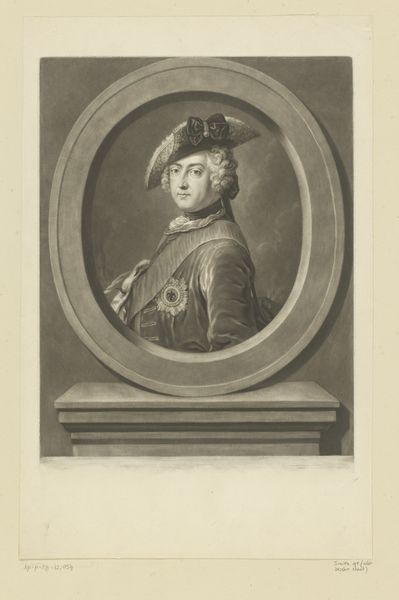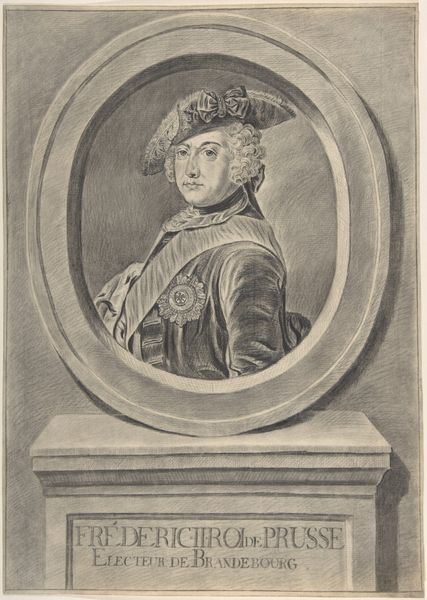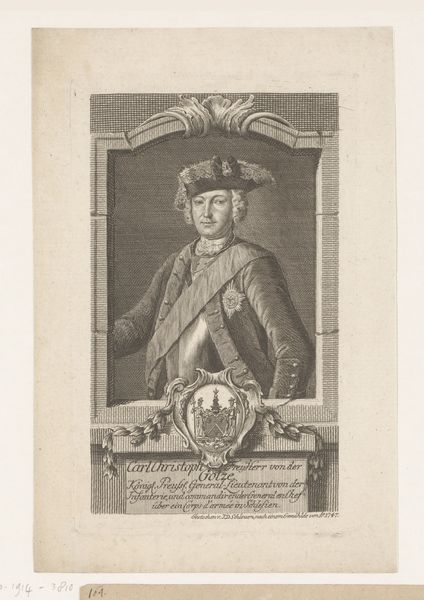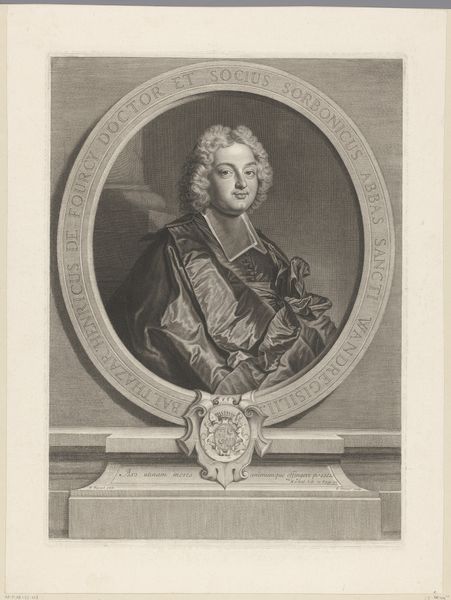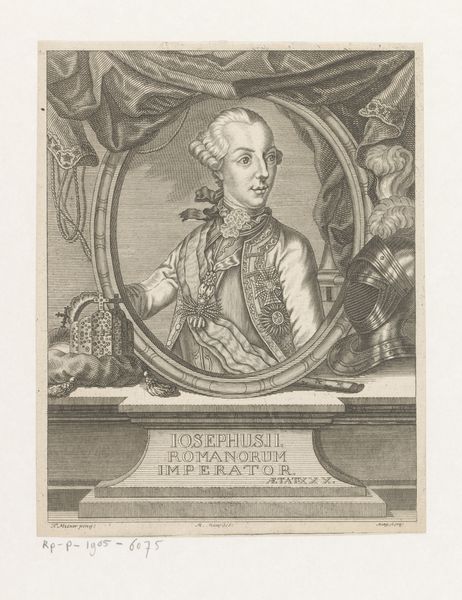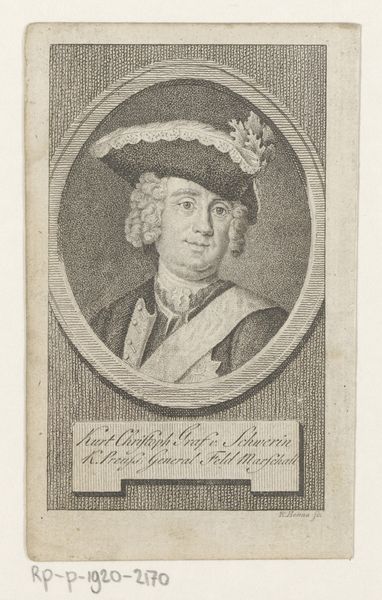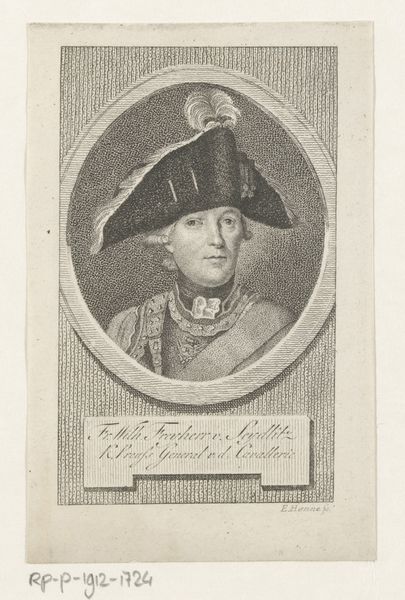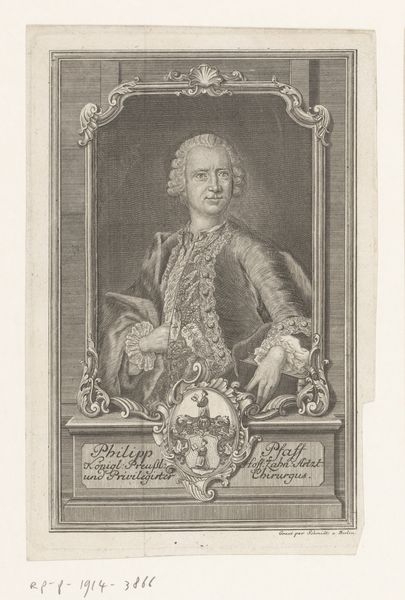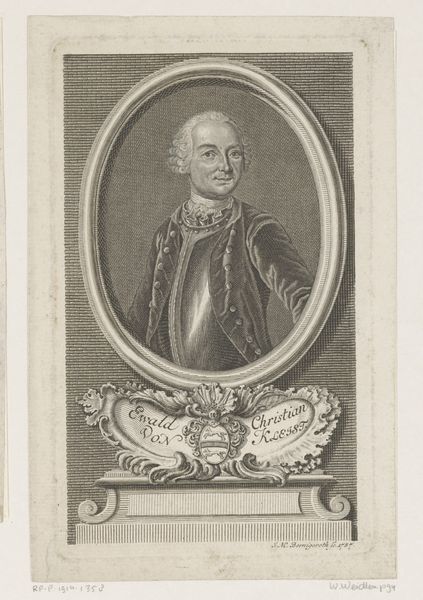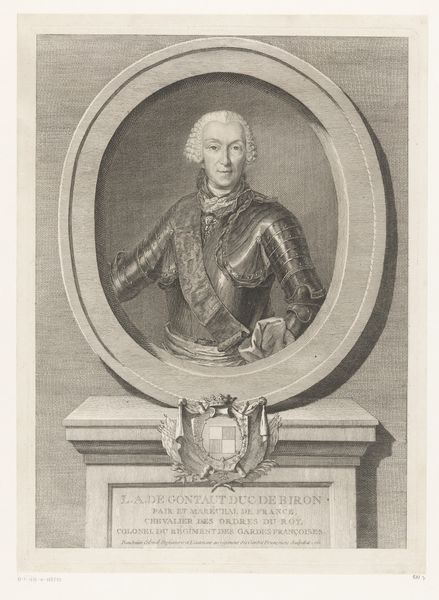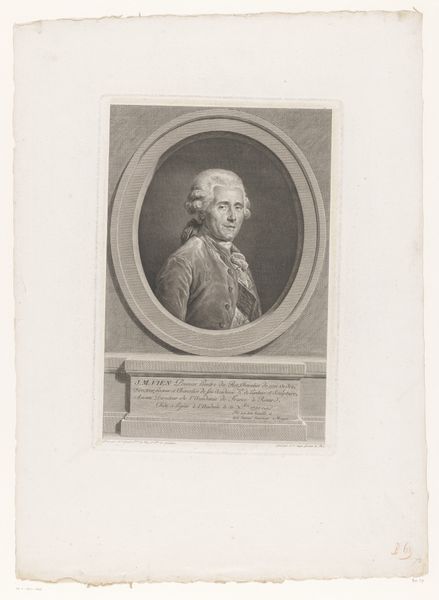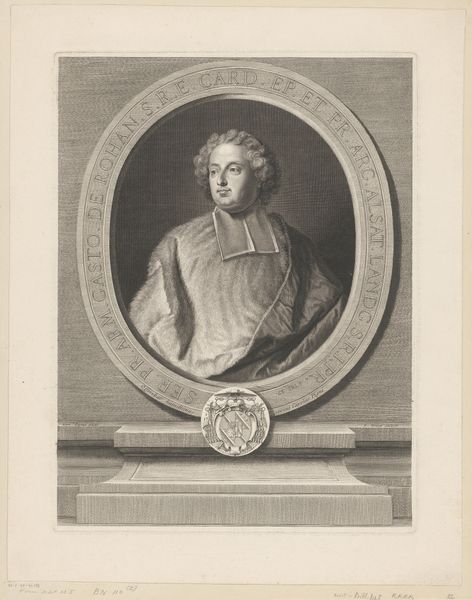
engraving
#
portrait
#
baroque
#
history-painting
#
academic-art
#
engraving
#
realism
Dimensions: height 402 mm, width 290 mm
Copyright: Rijks Museum: Open Domain
This is a portrait of Frederick the Great, made by Johann Georg Wille. Although undated, it was probably made mid-18th century. The method was engraving, a printmaking technique on metal. The image is achieved through an accumulation of tiny marks, each one made by hand with a special tool called a burin. Because the artist is cutting into metal, the matrix can be re-used many times. This allows for the creation of editions, which fueled the print market that was just exploding at this time. Engraving was perfect for the Enlightenment, in which reproducible knowledge was highly valued. Of course, the labor is intense. But it's exactly this quality – the sheer effort involved in creating a finely detailed image – that gave engravings their special value in the 1700s. This combination of artistry, labor, and mechanical reproduction created a potent new force in visual culture, an early form of mass media. Examining this through the lens of materials, making, and social context helps us understand the full impact of this artwork, beyond traditional distinctions between fine art and craft.
Comments
No comments
Be the first to comment and join the conversation on the ultimate creative platform.
